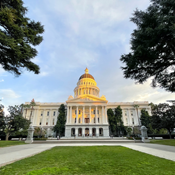
Tax Guide for Purchasers of Vehicles, Vessels, & Aircraft
California sales tax generally applies to the sale of vehicles, vessels, and aircraft in this state from a registered dealer. Use tax applies to the sale of vehicles, vessels, and aircraft purchased from non-dealers (for example, private parties) or from outside California for use in this state. Generally, although the rates are the same, it is the responsibility of the purchaser to report and pay use tax if the seller did not collect an amount for California sales or use tax from the purchaser.
If you purchase a vehicle, vessel, or aircraft from a private party, from an out-of-state seller, or from a California dealer but took delivery outside this state, you may be required to report the use tax directly to the California Department of Tax and Fee Administration (CDTFA). Use tax on the purchase of vehicles, vessels, and aircraft cannot be reported on your California State Income Tax return. To help you better understand the tax obligations for your purchase of a vehicle, vessel, or aircraft, we have created this guide detailing the tax issues and information important for you to comply with the law.
How to Use This Guide
This guide contains pages with important use tax information for your purchases of Vehicles, Vessels, and Aircraft.
The Resources page provides links to a wealth of information, including forms and publications, statutory and regulatory information, and access to live help from our customer service representatives.
Please note that the information included is general in nature and is not intended to replace any law or regulation.
If You Need Help
If at any time you need assistance with topics included in this guide – or with topics not included – feel free to contact us by telephone or email. Contact information and hours of operation are available in the Resources section.
If you have suggestions for improving this guide, please contact us via email.
